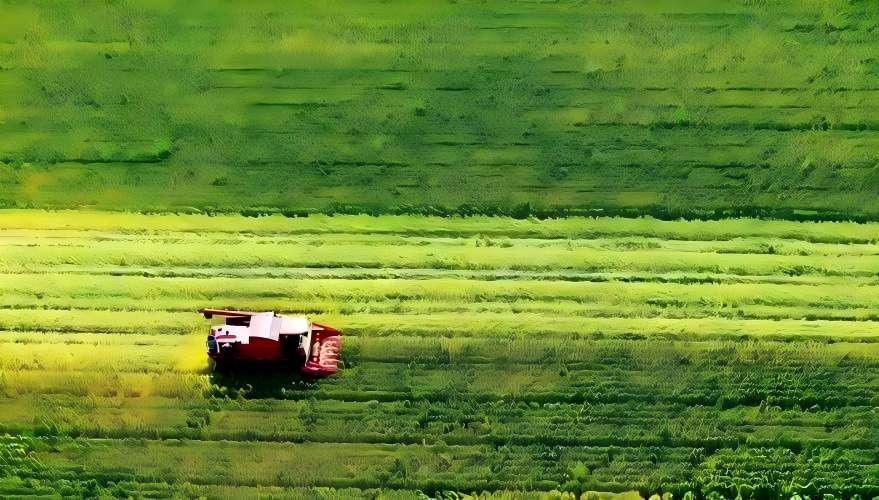What Is the Use of Ginkgo Dry Extract in Pig Breeding?
Ginkgo, also known as white fruit, gongsun tree, duck foot tree, and fan-shaped ginkgo, is a perennial deciduous tree in the Ginkgo genus of the Ginkgo family, which belongs to the gymnosperm division. It is a precious relict tree species unique to China and is known as a “living fossil”. China leads the world in the cultivation and planting of ginkgo, accounting for about 75% of the world's total[1]. The leaves, roots, pollen, flesh, and outer seed coat of ginkgo biloba are all used in medicine, with the leaves being the most important. With the popularization of the concept of green and healthy farming, the development of natural and safe herbal medicine feed additives as an alternative to antibiotics is an inevitable trend in the development of the animal husbandry industry. Ginkgo biloba leaves and extracts have medicinal properties such as anti-tumor, anti-oxidation, antibacterial, regulating blood lipids, and neuroprotection[2], and have been gradually introduced into livestock and poultry production in recent years.
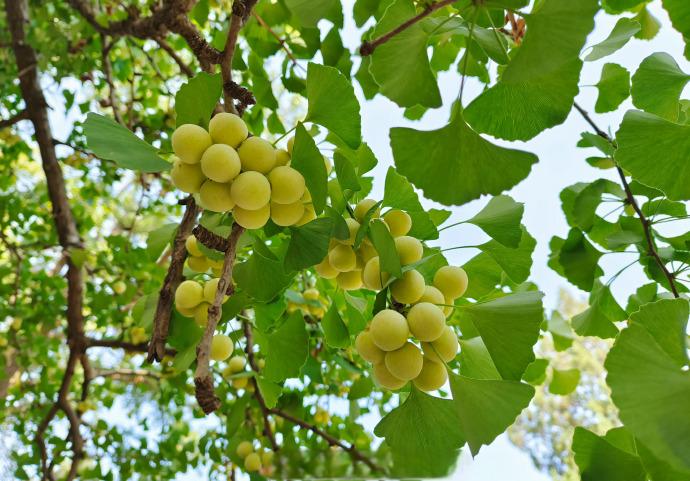
1 Chemical composition
1.1 Flavonoids
Flavonoids are the main active ingredients in ginkgo biloba leaves, accounting for 5.9% of ginkgo biloba leaf extract[3]. They are mainly composed of flavonoid glycosides such as quercetin, kaempferol and isorhamnetin, which are linked to monosaccharides such as glucose by an oxygen glycosidic bond. Ginkgo biloba extract contains more than 40 types of flavonoids, including 32 monflavonoids, 6 diflavonoids and 4 catechins [4]. Flavonoids mainly exhibit free radical scavenging and lipid peroxidation inhibition activities [5], and are the main chemical components of ginkgo biloba that exert a wide range of unique pharmacological activities.
1.2 Terpenoid lactones
Terpene lactones are another major active ingredient in ginkgo biloba, accounting for 0.1% to 0.6% of the total content. So far, a total of eight terpene compounds have been isolated from ginkgo biloba [6], which are divided into ginkgolides and bilobalides. Ginkgolides are diterpenoids, including ginkgolides A, B, C, M, J, etc. Ginkgolides are sesquiterpene lactones. Ginkgolides have strong and specific inhibitory activity on receptors and are currently considered to be the natural receptor antagonists with the most promising clinical application prospects [7].
1.3 Polysaccharides
Ginkgo biloba polysaccharides are heteropolysaccharides composed of rhamnose, arabinose, mannose and galactose [8]. Ginkgo biloba polysaccharide has various biological activities such as immunomodulation, anti-oxidation and anti-tumor [9].
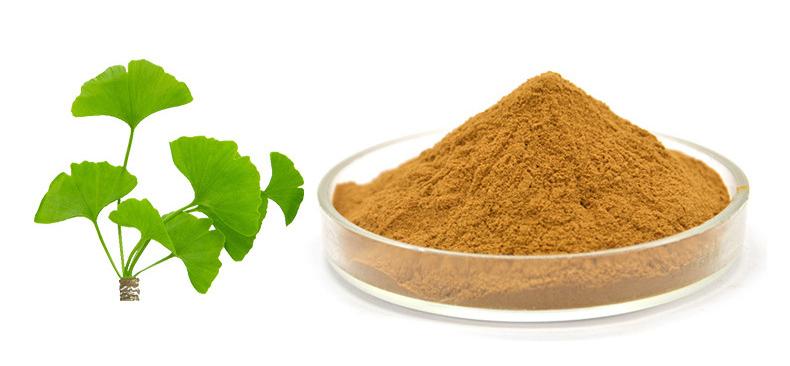
1.4 Amino acids
Ginkgo biloba contains 17 kinds of amino acids, with a total of 92.26 mg/g [10]. Glutamic acid is the most abundant, followed by aspartic acid and leucine. Ginkgo biloba contains 8 kinds of essential amino acids, accounting for 46.9% of the total amino acids.
1.5 Vitamins
Ginkgo biloba is high in vitamin E, vitamin B6, vitamin C, niacin and folic acid, with contents of 4.09, 2.90, 81.47, 9.43 and 1.69 mg/g respectively[10].
1.6 Minerals
Ginkgo biloba contains 25 minerals, including high levels of copper, zinc, iron and magnesium, with copper levels of 4.448 μg/g, zinc levels of 24.48 μg/g, iron levels of 539.3 μg/g and magnesium levels of 6 844 μg/g [11].
2. Role in pig production
2.1 Improves immunity
The various flavonoids, phenols, organic acids, polysaccharides and other active compounds contained in ginkgo biloba leaves can significantly enhance the activity of dehydrogenase in the mitochondria of lymphocytes in the body, promote the release of peroxidase in neutrophils[12], increase the content of serum IgG and the ratio of T lymphocyte CD3 subgroups to CD4 subgroups[13], improve the function of immune cells in the body, and at the same time increase the weight of the thymus, spleen and bursa of Fabricius. The weight of immune organs can also be increased[14]. Huang Qichun et al. (2012) added 0.2% to 0.3% ginkgo biloba extract to the diet of 25-day-old weaned piglets. feeding for 28 days can significantly increase the number of blood red blood cells, the number of lymphocytes, the mass concentration of hemoglobin and the percentage of lymphocytes in weaned piglets, promote the production of serum immunoglobulins IgG, IgM, IgA and complement CD3, CD4, as well as the secretion of interleukin (IL)-2 and interferon (IFN)-γ, enhancing the immune function of weaned piglets [15].
Cao Manhu et al. (2012) [16] added 0.2% ginkgolide (a fermented product of ginkgo biloba leaves) to the diet of 21-day-old weaned piglets for 21 days, similar results were obtained. The serum albumin and total protein content of piglets increased by 19.97% and 14.97% respectively, the blood T lymphocyte transformation rate increased by 8.25%, and the blood IL-2 content increased by 15.25%.
Research [17] also found that ginkgo biloba extract can significantly increase the number of intraepithelial lymphocytes and goblet cells in the duodenum, jejunum and ileum of weaned piglets, and significantly increase the content of IgA, IL-2, IL-4 and IFN-γ in the mucosa of the duodenum, jejunum and ileum of piglets, which can improve the immune barrier function of the small intestine mucosa of weaned piglets. In addition, ginkgo biloba extract can be used as an immune enhancer to improve the efficacy of vaccines. Li Xiaohua et al. (2018) [18] added 1.4 mg/mL ginkgo biloba flavonoids to the Haemophilus parasuis vaccine, and the protective rate against challenge with a virulent type 5 strain was 100%. and the ratio of peripheral blood CD4+/CD8+ T lymphocyte subsets and the content of serum tumor necrosis factor (TFN)-α were all improved to a certain extent. Ginkgo biloba flavonoids have a significant immunomodulatory effect on the inactivated Porcine Hemorrhagic Fever virus vaccine.
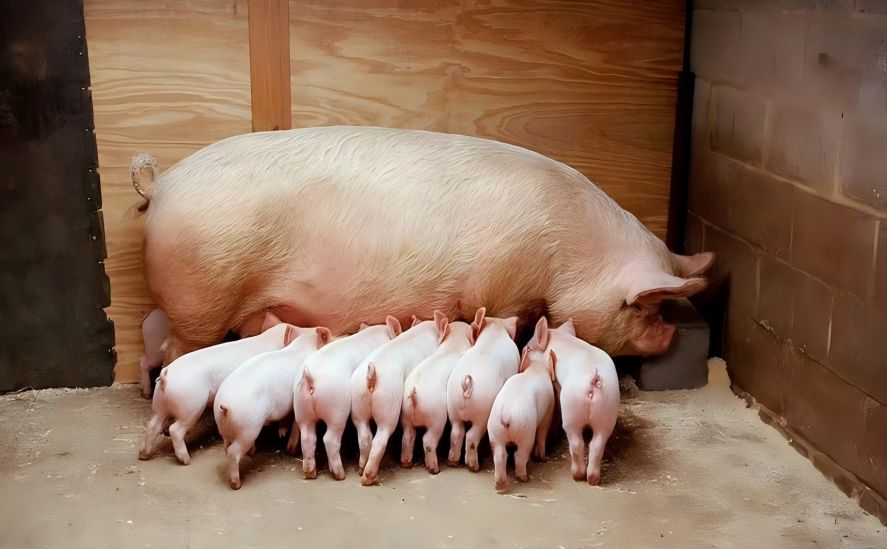
2.2 Antibacterial and anti-inflammatory
Ginkgo biloba flavonoids, ginkgolides, and ginkgolic acids have antibacterial and bactericidal effects, which are related to the concentration [19]. Ginkgolides have a therapeutic effect on sepsis caused by Gram-negative bacterial infections and also have a strong inhibitory effect on viruses [20]. Huang Qichun et al. (2012) [21] studied the in vitro antibacterial effect of Ginkgo biloba leaf extract (EGB) on several pig intestinal bacteria and found that EGB showed a certain antibacterial effect on Staphylococcus aureus, Proteus, Salmonella, Enterobacter aerogenes, Escherichia coli, Pseudomonas aeruginosa and Candida albicans. Sheng Jianguo et al. [22] studied the antibacterial effect of ginkgo biloba leaf extract on Escherichia coli, Aspergillus niger, red yeast and white yeast. The results showed that ginkgo biloba leaf extract has a good inhibitory effect on common contaminating bacteria, and its antibacterial strength is related to its concentration.
Chen Qingzhong et al. (2015) [23] added ginkgo leaf extract to a co-infection system of Streptococcus suis and host cells and found that it could significantly reduce the ability of Streptococcus suis to penetrate the epithelial cell barrier and the bacterially mediated cytotoxicity. Ginkgo leaf extract has a therapeutic effect on Streptococcus suis infection. Lin Biaosheng et al. (2016) [24] used traditional Chinese medicinal preparations made from ginkgo leaves, mulberry leaves and other traditional Chinese medicinal herbs to study their in vitro antibacterial, antiviral and field control effects. They found that the fermented traditional Chinese medicinal preparations were moderately sensitive to the pathogenic bacteria of piglet diarrhea and had a good therapeutic effect on viral gastroenteritis in piglets.
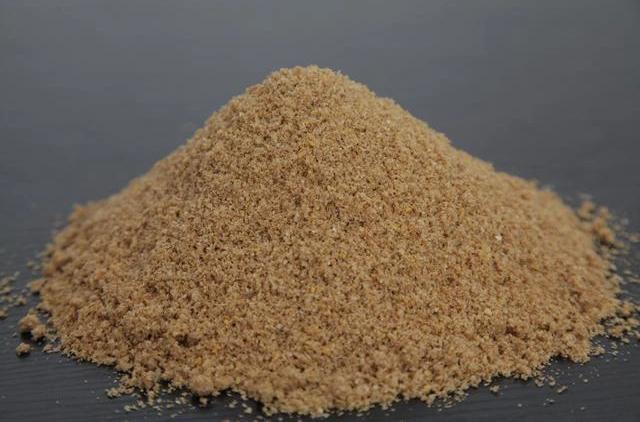
2.3 Growth-promoting effect
Ginkgo biloba leaves are rich in nutrients such as protein, various vitamins and trace elements that the animal body needs, which can improve the nutritional value of the feed. At the same time, it has the effect of regulating the intestinal flora, thereby promoting animal growth and reproduction. Huang Qichun et al. (2018) [25] added 1.0% Ginkgo biloba ultrafine powder to the feed of 25-day-old piglets, significantly reduced the number of Escherichia coli and Salmonella in the piglets' rectums and increased the number of probiotics such as Lactobacillus and Bifidobacterium in the intestines. It significantly increased the villus height and villus height/crypt depth of the piglets' small intestines, significantly increased the average daily weight gain of weaned piglets, and reduced the feed conversion ratio.
Cao Manhu et al. (2012) [16] added 0.2% ginkgolide to the diet of 21-day-old weaned piglets for 21 days. Compared with the control group, the final weight of the experimental group increased by 8.92%, the diarrhea rate was significantly reduced, and the feed conversion ratio was reduced by 7.27%. Research [26] found that adding ginkgo leaf extract to the feed can improve the digestion and absorption of nutrients by weaned piglets, significantly improve the digestibility of crude protein and crude fat by weaned piglets, and significantly increase the activity of proteinase, trypsin, lipase and amylase in the duodenum, jejunum and ileum of piglets.
2.4 Antioxidant effect
Ginkgo flavonoids are one of the natural antioxidants. They can remove free radicals, superoxide anions and nitric oxide, regulate the activity of free radical reaction enzymes, inhibit free radical reactions and lipid peroxidation reactions, and slow down the damage caused by oxygen free radicals and lipid peroxidation [27]. Research [28] found that adding ginkgo biloba extract to piglets' feed can significantly increase the activity of total superoxide dismutase, catalase, and glutathione peroxidase in the serum of weaned piglets, as well as the total antioxidant capacity. It can also significantly reduce the levels of malondialdehyde and nitric oxide in the serum. The serum high-density lipoprotein cholesterol and total protein levels of weaned piglets showed an increasing trend, and a decreasing trend in serum total cholesterol and low-density lipoprotein cholesterol levels, which improves the body's antioxidant capacity.

Shang Xuebing (2016) [29] studied the effect of ginkgo biloba extract on the storage stability of fermented pork sausages. The results showed that as the amount of ginkgo biloba extract added increased, the changes in the acid value, peroxide value and thiobarbituric acid value of fermented pork sausages became slower and slower. Ginkgo biloba extract can significantly slow down the rate of acid production and oxidation of fermented pork sausages. Adding 0.25% ginkgo biloba extract has the best effect on improving the stability of fermented pork sausages.
3 Conclusion
China is rich in ginkgo resources and is the main producer of ginkgo. Ginkgo extract products are widely used in food and cosmetics in addition to being used as medicine at home and abroad. In recent years, they have been gradually introduced into livestock and poultry production as a safe, green plant and its extracts as an alternative to antibiotics. However, the scale of ginkgo leaf processing and production in China is small and fragmented, and the technology is relatively backward. The extraction process needs to be improved and optimized, and there is currently a lack of unified veterinary drug standards for ginkgo leaves, extracts and preparations. In addition, the active ingredients such as flavonoids and polysaccharides in ginkgo biloba leaves from different regions and species and in different seasons also vary, and the formulation of standards for their use needs further improvement. Finally, although a large amount of research has been carried out on the pharmacological effects of ginkgo, the complexity of its composition is still not fully understood, and there has been relatively little applied research, especially in livestock and poultry production. Taking advantage of the uniqueness of China's ginkgo resources and vigorously developing the application of ginkgo leaf extract as an alternative to antibiotics in aquaculture has good development prospects.
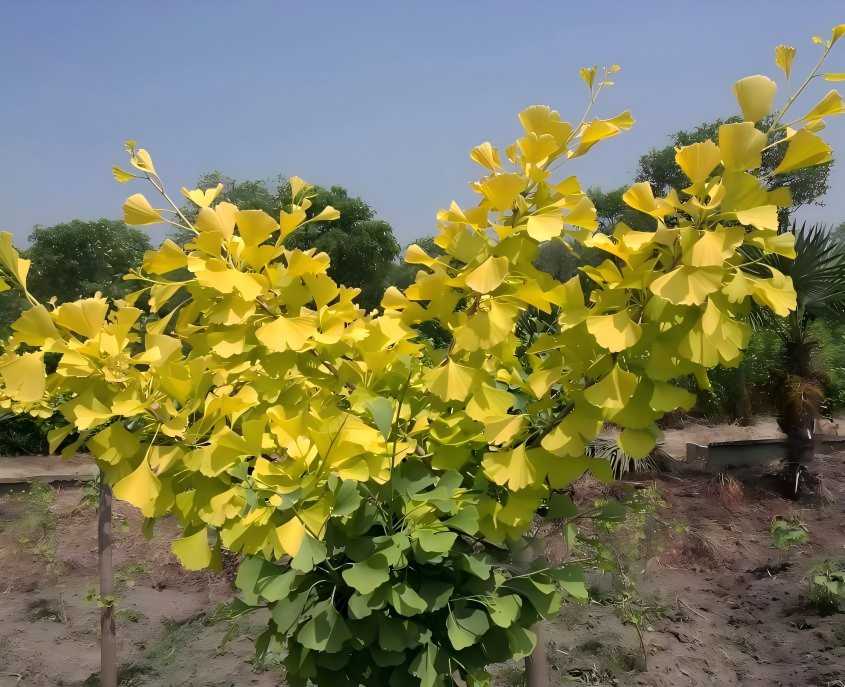
References
[1] Liang Lixing. The impact of China's accession to the WTO on the ginkgo industry and countermeasures [J]. Forestry Science and Technology, 2001 (2): 29-31.
[2] Gai Xiaohong, Liu Suhuang, Ren Tao, et al. Research progress on the chemical composition, preparation types and adverse reactions of ginkgo [J]. Drug Evaluation Research, 2017, 40 (6): 742-751.
[3] Huo J C, Yang J, Ou L L, et al. Health benefits of ginkgo and its application in the food industry [J]. Cereals, Oils and Fats, 2005 (4): 42-47.
[4] Zhang H Z, Liu T J, Dong Y S, et al. Research progress of ginkgo biloba extract [J]. China Brewing, 2009, 202 (1): 14-15.
[5] Guo J, Liu Y, Li Y, et al. Protective effect of total ginkgo biloba extract on H2O2-induced myocardial cell injury [J]. Chinese Herbal Medicine, 2008, 39(12): 1864-1867.
[6] Gao H. Pharmacological effects of ginkgo biloba extract [J]. Chinese Practical Medicine, 2010, 5(16): 168-169.
[7] Maclennan K M, Darlington C L, Smith P F, et al. The CNS effects of Ginkgo biloba extracts and ginkgolideB[J]. Prog Neurobiol, 2002, 67(3): 235-257.
[8] Jin Juqing, Ding Dongning, Bian Xiaoli, et al. Chemistry of ginkgo biloba polysaccharides and their scavenging of hydroxyl radicals [J]. Journal of Xi'an Medical University, 2000, 21(5): 417-419.
[9] Chen Qun, Liu Tianjiao. Anti-tumor and immunomodulatory effects of ginkgo biloba polysaccharides [J]. Traditional Chinese Medicine Pharmacology and Clinical, 2003, 19 (5): 18-19.
[10] Chen Guohua, Deng Fuliang, Liu Jianping, et al. Analysis of amino acid and vitamin content in ginkgo biloba [J]. Journal of Hunan Medical University, 2001, 26 (4): 335-336.
[11] Sun Jing, Xu Lihua, Cui Xi, et al. Determination of trace elements in ginkgo biloba by atomic absorption spectrophotometry [J]. Chinese Pharmacist, 2006, 9 (11): 1009-1010.
[12] Sun Kenen. Research on the application of ginkgo biloba and its extracts in livestock and poultry production [J]. Guangdong Feed, 2015, 24(2): 47-49.
[13] Hao L, Yu Y, Liu Y, et al. Effects of Ginkgo biloba extract on in vitro proliferation and secretion function of mouse splenic lymphocytes [J]. Feed Research, 2016(2): 45-50.
[14] Luo C, Yu L, Liu C, et al. Application of Ginkgo biloba extract in feed [J]. Feed Expo, 2015 (2): 37-40.
[15] Huang Qichun, Zheng Xintian, Yang Xiaoyan, et al. The regulatory effect of Ginkgo biloba extract on the immune function of weaned piglets [J]. Journal of Northwest A&F University, 2012, 40 (11): 23-28.
[16] Cao Manhu, Wang Chai, Xiao Xiaoping, et al. Effects of ginkgolides on growth performance and immune indices of piglets [J]. Journal of Animal Nutrition, 2012, 24(6): 1119-1123.
[17] Huang Qichun, Chen Tong, Zheng Xintian. Effects of ginkgo biloba leaf extract on the immune barrier of the small intestinal mucosa in weaned piglets [J]. Journal of Anhui Agricultural University, 2015, 42(5): 711-714.
[18] Li Xiaohua, Qiu Longxin, Lin Zhifeng, et al. Study on the effect of ginkgo biloba flavonoid glycosides on the immunological efficacy of type 5 inactivated vaccine against Haemophilus parasuis [J]. Chinese Journal of Veterinary Medicine, 2018, 54(3): 98-107.
[19] Lin Qishou. Chemical Constituents of Chinese Medicinal Herbs [M]. Beijing: Science Press, 1977: 343.
[20] Liu Gaolin. Pharmacological Effects and Clinical Application of Ginkgo Preparations [J]. Shanghai Medicine, 2016, 37(3): 8-22.
[21] Huang Qichun, Zhang Guizhao, Lin Meixiang, et al. In vitro antibacterial effect of Ginkgo biloba extract and its drug-containing serum on the intestinal flora of piglets [J]. Jiangsu Agricultural Science, 2012, 40 (10): 185-187.
[22] Sheng Jianguo, Huang Dongyu. Discussion on the extraction process and antibacterial properties of Ginkgo biloba extract [J]. Cereals, Oils and Foodstuffs Science and Technology, 2005, 13 (5): 16-18.
[23] Chen Qingzhong, Li Gen, Deng Xuming, et al. Study on the anti-hemolysin activity of ginkgo biloba extract against Streptococcus suis type 2 [J]. Heilongjiang Animal Husbandry and Veterinary Medicine, 2015 (11): 171-174.
[24] Lin Biaosheng, Wu Jiangwen, Dai Ailing, et al. Study on the application effect of Ginkgo biloba-Mulberry leaf Chinese medicine fermentation preparation in the prevention and treatment of viral gastroenteritis in piglets [J]. Chinese Journal of Veterinary Medicine, 2016, 52 (9): 56-58.
[25] Huang Qichun, Zheng Xintian, Huang Cuiqin, et al. Effect of Ginkgo biloba ultrafine powder on growth performance, intestinal flora and morphology of weaned piglets [J]. Chinese Journal of Animal Science, 2018, 54(11): 105-109.
[26] Huang Q C, Chen T, Zheng X T, et al. Effects of Ginkgo biloba leaf extract on nutrient digestibility, digestive enzyme activity and intestinal absorption in weaned piglets [J]. Chinese Journal of Animal Science, 2017, 53(3): 125-128.
[27] Yang Qiang, Li Xinhua, Wang Lin, et al. Study on the physicochemical properties and antioxidant activity of ginkgo biloba polysaccharides [J]. Modern Food Science and Technology, 2013, 29(10): 2395-2400.
[28] Huang Qichun, Zheng Xintian, Zhong Shengping, et al. Effects of Ginkgo biloba extract on growth performance, serum biochemical indicators and hormone levels of weaned piglets [J]. Journal of Northwest A&F University, 2011, 39(8): 51-55.
[29] Shang Xuebing. Effects of Ginkgo biloba extract on the storage stability of fermented pork sausages [J]. China Feed Additives, 2016(1): 104-108.


 English
English French
French Spanish
Spanish Russian
Russian Korean
Korean Japanese
Japanese


